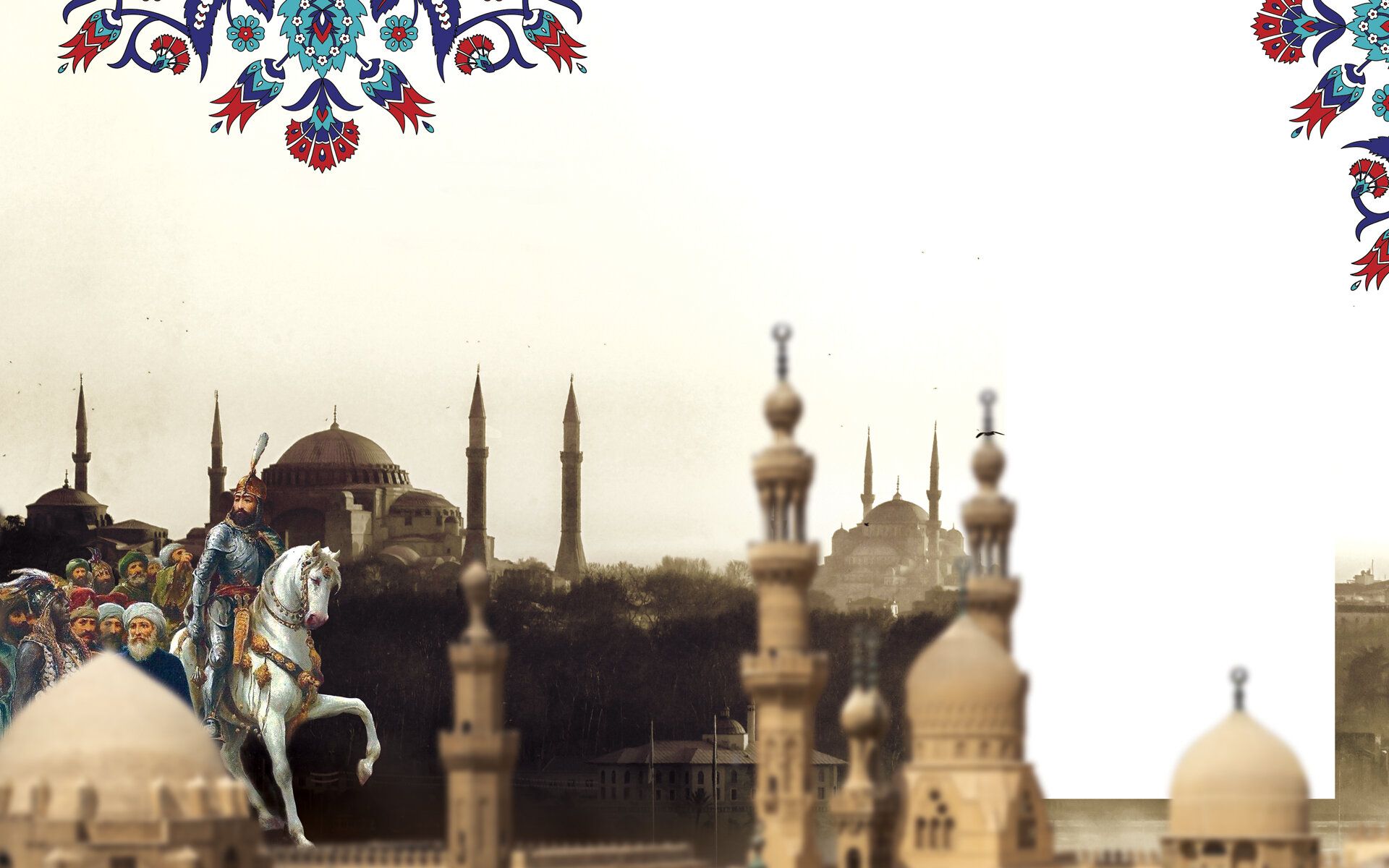A Genuine Tolerance

In This Article
-
The Ottomans exhibited exceptional tolerance and permissiveness regarding religious freedom, much more so than other countries of the time.
-
To be able to understand how the Ottomans excelled in tolerance, one has to consider how they upheld Islamic principles and values concerning Muslims’ relationship with non-Muslims.
-
The Ottoman Empire acted politically in accordance with the Islamic values that Muhammad demonstrated in the Medina Charter.
For more than six hundred years, from 1300 until 1922, the Ottoman Empire ruled over a religiously diverse population. For the duration of its entire existence the state exhibited exceptional tolerance and permissiveness regarding religious freedom, much more so than other countries of the time. The Ottoman state practiced these Islamic values with remarkable genuineness for the majority of its rule, with the exception being in the decline of the Ottoman state (19th century), when religious tolerance was used as a means for resecuring state authority and loyalty. To be able to understand how the Ottomans excelled in tolerance, one has to consider how they upheld Islamic principles and values concerning Muslims’ relationship with non-Muslims as prescribed in the Qur’an and Prophet Muhammad’s example.
Multiculturalism and tolerance in Islam
Islam is firmly rooted in acceptance and respect of other cultures as evidenced in many Qur’anic verses and events in Muhammad’s life, like the Medina Charter and Farewell Sermon. The Medina Charter, for instance, was a contract Muhammad established to bring peace to Medina where he found himself in the role of community arbitrator. This was a sharp contrast from the context in Mecca, where his preaching of new revelation had him marked as an enemy of the establishment in Mecca.
In Medina (known as Yathrib at the time) there were two powerful tribes: the Aws, and the Khazraj. The pair were strong and forceful, idol worshipers, and in constant conflict and battle [1]. Also present in Medina were a large number of Jews, though they did not have the influence and power that the Aws and Khazraj did. When Muhammad arrived in Medina at the invitation of the community leaders in 622 AD, he developed the Medina Charter; a pact between all the major groups of the city [2].
The Medina Charter was intended to ensure the collective security of the Aws, Khazraj, and Jews, as well as Muslims who had now arrived. The document served as a defense pact for the city in order to serve the greater good of Medina. Since Muhammad held all of the groups agreeing to the pact as equals it has since been hailed as a milestone and model for multiculturalism. There are significant messages of community and cooperation in the document, as found explicitly in “the Jews of the B. ‘Auf are one community with the believers, (the Jews have their religion and the Muslims have theirs)” [3]. In this Charter, Muslims and Jews are commanded to “help the other… [and] seek mutual advice and consultation” [4]. In demanding that the two groups both aid each other and come together to form solutions, he is revealing firstly that he does regard the Jews with respect and equality; and secondly that he (and the early Muslims) can look beyond differences of religion and culture for the insurance of their security and welfare.
Looking at religious texts and models in Islam, the Qur’an contains numerous verses relevant to pluralism and acceptance. Two relevant verses are “there is no compulsion in religion,”[5] which implies that nobody can forcibly be converted to Islam, and “we have honored the Children of Adam, and We have… provided them with At-Tayyibat (lawful good things),”[6] which describes how the Muslims have honored all people, because of their belief that all of humanity come the same origin, stemming from Adam and Eve.
Muhammad’s Final Sermon is his legacy for Islam. In this sermon he reiterated the idea that all of humanity originates from the same people with the words “all mankind is from Adam and Eve. An Arab has no superiority over a non-Arab, nor does a non-Arab have any superiority over an Arab; white has no superiority over black, nor does a black have any superiority over a white” [7]. Some of the values Prophet Muhammad wanted Muslims to adopt were those of equality and that there is no superiority of any race over another because of the fact that all of the human race originated from two people. Also present in the sermon are messages of benevolence and kindness. “Hurt no one so that no one may hurt you,” and “you will neither inflict nor suffer any inequality” [8] are intended to ensure that Muslims treat others with respect and dignity. With his final sermon Prophet Muhammad took one final opportunity to ensure that Muslims understood that equality is inherent to Islam.
Muhammad did not just preach about tolerance, he practiced it as well. Suffering years of persecution from the Quraysh, the Muslims would have been expected to retaliate for the violence against him according to Arabian tribal customs which operated on an “eye for an eye” philosophy. Instead, when Muslims came to Mecca, Muhammad promised lenience and mercy for anyone who agreed to stop fighting the Muslims regardless of their past actions. The Quraysh, upon seeing the Muslim’s true message and intention, did not resist their entrance into Mecca. Keeping his promise after he entered the city, Muhammad ensured that the “conquest” of Mecca was bloodless and non-violent, demonstrating his commitment to peace and tolerance [9].
Ottoman practice of Islamic values: The Millet system
The Ottoman Empire acted politically in accordance with the Islamic values that Muhammad demonstrated in the Medina Charter. The millet, which is translated as “nation” in English, referred to the autonomous communities under the Ottoman Empire based on their religious traditions [10]. While the Ottomans did divide groups based on their religious identities, they did so with careful attention to differences and divisions. Evidence of this is the different Armenian millets: the Georgian Armenians, Catholic Armenians, and Protestant Armenians. This breakdown demonstrates that the Ottomans understood the different beliefs and values of each group and prevented sectarian divides and conflicts [11].
The dominant millet, or religiously defined community, were the Muslim Turks. In spite of the dominance of the Muslim Turks, non-Muslim subjects in the empire possessed almost equal rights. The Ottoman state insured that the members of the non-Muslim millets had security of life and property, and freedom of religion and work, provided that they did not interfere with the governing of the state or the lives of the Muslim population. The non-Muslim millets were also granted the legal right to use their own language; develop their own educational institutions, religious or cultural; collect taxes; and establish their own court systems. With their own court system, millets could produce their own legal doctrines and try members of their millet provided that the offense concerned members of the relevant millet only and was minor. If the issue was concerning public order or criminal law the matter would be dealt with in accordance with Islamic law. The non-Muslim millets also possessed a large degree of autonomy in matters of family law, such as birth, marriage, death, and inheritance. As aforementioned, the non-Muslim millets possessed almost equal rights. These groups were forbidden from bearing arms and riding horses, and were also mandated to wear hats and shoes of certain colors which corresponded with their millet [12].
The millet system can be likened to the Medina Charter for they both facilitated coexistence of different groups under one administration while still enjoying respective freedoms of religious practice and legal autonomy. The millet system itself, and the religious tolerance that is inherent in its creation, also reflects Muhammad’s idea that “the Jews have their religion and the Muslims have theirs” because both with the Ottomans and Muhammad, religious differences are respected for the greater good of the community. The Ottomans were faithful to Muhammad’s command for the Jews and Muslims to “seek mutual advice and in the Medina Charter” as they allowed millets to elect their own leaders as long as the Ottomans approved of him. This leader then represented the millet and voiced their interests to the state [13].
Ottoman religious tolerance with the millet system is even more significant when compared to other states and empires and their tolerance of alternative faiths. In 1492, the Spanish kingdom issued the Alhambra Decree which expelled all Jews from its lands. The edict ordered all “Jews and Jewesses of our kingdoms to depart and never to return or come back to them,” taking with them their “sons and daughters, menservants and maidservants, [and] Jewish familiars,” returning “neither temporarily on the way to somewhere else nor in any other manner.” The Jews were allowed to leave with their possessions, though, “as long as they do not export gold or silver or coined money.” The Spanish justified this because “every day it is found and appears that the said Jews increase in continuing their evil and wicked purpose wherever they live and congregate” [14].
Sixty-three years later, Catholic Pope Paul IV issued “Cum Nimis Absurdum,” which read “it is completely senseless and inappropriate to be in a situation where Christian piety allows the Jews… access to our society and even to live amongst us.” The Pope was upset that the Jews “manage[d] to claim superiority,” “instead of slavery, which they deserve.” Because of this, he issued a new code of behavior for the Jews, mandating that “for the rest of time, in… [the] domains of the Church of Rome… all Jews are to live in only one [quarter] to which there is only one entrance and from which there is but one exit,” with only one synagogue allowed in each quarter. The rest of the synagogues were “to be destroyed and demolished.” In addition to the new restrictions of their community, Jews could no longer “incriminate Christians in any way,” “play, eat or fraternize with Christians,” or perform any occupation other than rag-picking [15].
Tolerance of the Sultans
Smaller, though significant examples of Ottoman tolerance can be found in the actions of the sultans [16]. Following the Ottoman’s conquest of Bosnia-Herzegovina in 1463, Sultan Mehmet II issued an Ahdnama, an imperial document concerning rights and protections. Mehmet II assures the Bosnian Franciscans that they are in his “good graces,” and proves this to be true, as he wrote: “Let nobody bother or disturb those who are mentioned, nor their churches… let them dwell in peace… and be safe… let them settle down their monasteries without fear in all the countries of my empire.” Mehmet II did not just extend his good will, he also ensured that “neither my royal highness, nor my viziers or employees, nor my servants, nor any of the citizens of my empire shall insult or disturb them,” explicitly forbidding any members of the empire, regardless of their rank, to act against the Bosnian Franciscans [17].
Twenty-nine years after Sultan Mehmet II’s acceptance and blessing of the Christians, Sultan Bayezid II sent the Ottoman navy to the rescue of the Jews that were expelled from Spain with the aforementioned Alhambra Decree of 1492. The sultan also sent representatives to all of his European provinces with orders to ensure that the Jews received a welcome and friendly reception from their hosts. Bayezid II even went as far as to punish with death penalty anyone that refused to accept the Jews into the empire or treated them harshly [18].
Ottoman decline and disingenuous tolerance
The Ottomans entered a period of decline in 1600s that would eventually result in its collapse after World War 1. During this period while many territories were being lost to the Europeans, the Empire was also not able to take steps for economic, industrial, and political progress. To reverse the downturn, several reforms were introduced to modernize the state. The Rescript of Gülhane in 1839 and the Rescript of Reform in 1856 guaranteed security of life, honor, and fortune, and standardized taxes and military service. The second Rescript has a bigger focus on religions other than Islam and is much more oriented towards clarifying the specific rights of Christians and Jews [19]. In this document, there is also a push for “the formation of roads and canals to increase the facilities of communication and increase the sources of the wealth,” which will be done through “profit by the science, the art, and the funds of Europe” [20]. The introduction of taking loans from Europe evidences the Ottoman decline as well, because the state was unable to collect sufficient capital internally.
All of the reforms made under both the Rescript of Gülhane and the Rescript of Reform paralleled Western values, and even ape them in some cases. Included in this rather vain attempt at restoration were the Ottoman reforms on the freedom of religion, making it a means to an end, just as the rest of the reforms were. This was a distinct departure from earlier Ottoman policies and actions. With the millet system and the actions of the sultans, the state was performing genuine tolerance and acceptance. The acceptance of religious minorities was casual, standard, and expected, and had its foundation in Islam, particularly in Qur’anic verses related to tolerance, the Medina Charter and Muhammad’s conduct with non-Muslims. Later, as the Ottoman Empire began to decay and lose authority, the religious tolerance became written law with the Rescripts, as they felt it necessary to explicitly state what had already been happening for centuries as a way of proving their currency and parallel with the West. This made the religious tolerance a means to an end. In spite of this disingenuous tolerance at the end of the Ottoman Empire, for more than six hundred years it managed to rule a diverse population, and did so with more respect and sensitivity than most other states of the time, providing a testament to the sympathy and understanding that are at the core of Islam.
Notes
- The tribal system in Arabia in the seventh century promoted retaliation for offenses against the tribe, resulting in cycles of conflict.
- Azzam, Leila and Gouverneur, Aisha, The Life of the Prophet Muhammad, (Edmonton, 2019). 39-45.
- Muhammad, Medina Charter, 622 a.d., in In The Life of Muhammad: A Translation of Ishaq’s Sirat Rasul Allah, A. Guillaume (Karachi: Oxford, 1978), section 25.
- Ibid. Section 37.
- Muhammad Taqi-ud Din Al-Hilali and Muhammad Muhsin Khan, eds., Interpretation of the Meanings of the Noble Qur’an: in the English Language (New York, 2010), 2:256.
- Al-Halali, Interpretations of the Meanings, 17: 66-70.
- Muhammad, Farewell Sermon, 632 a.d. https://isaugusta.com/wp-content/uploads/2017/10/The-fare well-sermon.pdf, 2.
- Ibid, 1.
- Azzam, The Life of the Prophet, 68-71.
- Ceylan, Ebubekir, “The Millet System in the Ottoman Empire,” in New Millennium Perspectives in the Humanities, ed. Judi Upton-Ward (Istanbul: Faith University, 2002), 248-250.
- Ibid, 256.
- Ibid, 250-251.
- Ceylan, “The Millet System in the Ottoman Empire,” 251.
- King Ferdinand and Queen Isabella, Edict of the Expulsion of the Jews, 1492, http://www.sephardicstudies.org/decree.html.
- Pope Paul IV, Cum Nimis Absurdum, 1555. https://www.ccjr.us/dialogika-resources/primary-texts-from-the-history-of-the-relationship/paul-iv. ‘Ragpicking,’ refers to collecting garbage from the streets.
- “Sultan” has Arabic origins as a spiritual or moral authority. In this context, it refers to the political leader of the Ottoman Empire. See https://www.britannica.com/topic/sultan-Islamic-title.
- Mehmet II, Ahdnama of Mehmet II, 1463.https://niagara.instructure.com/courses/16790/files/folder/Weekly%20Readings?preview=1116587.
- “Sultan Bayezid II Welcomes Jewish Refugees from Spain,” History of Information, accessed December 10, 2020, https://www.historyofinformation.com/detail.php?id=2346.
- Abdulmejid I, Rescript of Reform, 1856.
- Ibid.
Bibliography
- Abdulmejid I. The Rescript of Gulhane, 1839. https://www.anayasa.gen.tr/gulhane.htm.
- Abdulmejid I. The Rescript of Reform, 1856. https://www.anayasa.gen.tr/reform.htm.
- Al-Hilali, Muhammad Taqi-ud Din and Khan, Muhammad Muhsin, eds. Interpretation of the Meanings of the Noble Qur’an: in the English Language. New York: Darussalam, 2010.
- Armstrong, Karen, Islam: a Short History. New York: Modern Library, 2002.
- Azzam, Leila and Gouverneur, Aisha, The Life of the Prophet Muhammad. Edmonton: Al Rashid Mosque, 2019. https://alrashidmosque.ca/wp-ontent/uploads/2019/05/The-Life-of-The-Prophet-Muhammad.pdf.
- Ceylan, Ebubekir. “The Millet System in the Ottoman Empire.” In New Millennium Perspectives in the Humanities, edited by Judi Upton-Ward, 245-266. Istanbul: Faith University, 2002.
- King Ferdinand and Queen Isabella. Edict of the Expulsion of the Jews, 1492. Translated by Edward Peters, 2002. http://www.sephardicstudies.org/decree.html.
- Mehmet II. Ahdnama of Mehmet II, 1463.https://niagara.instructure.com/courses/16790/files/folder/Weekly%20Readings?preview=1116587.
- Muhammad. Farewell Sermon, 632 a.d.. https://isaugusta.com/wp-content/uploads/2017/10/The-farewell-sermon.pdf.
- Muhammad. Medina Charter, 622 a.d.. In The Life of Muhammad: A Translation of Ishaq’s Sirat Rasul Allah, A. Guillaume. Karachi, Oxford, 1978, p. 231-233.
- Pope Paul IV. Cum Nimis Absurdum, 1555. https://www.ccjr.us/dialogika-resources/primary-texts-from-the-history-of-the-relationship/paul-iv.
- “Sultan Bayezid II Welcomes Jewish Refugees from Spain.” History of Information. Accessed December 10, 2020. https://www.historyofinformation.com/detail.php?id=2346.








